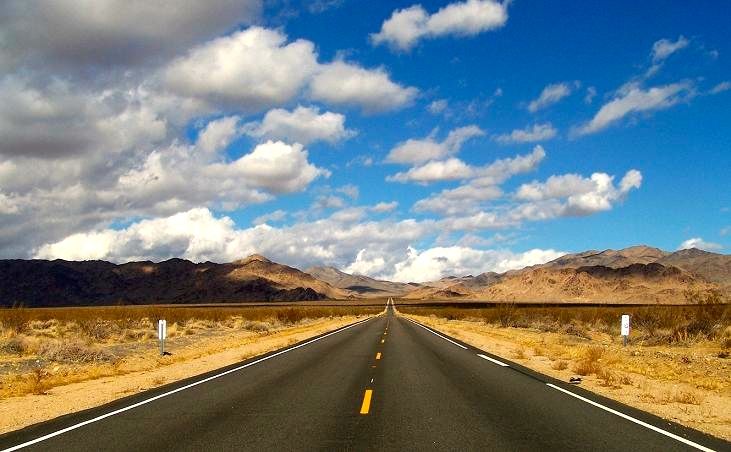Through the Desert
Only when I drove to Zion did I understand the extent of Vegas’ geographical isolation — it really is in the middle of nowhere. Towering over all 360 degrees of the horizon, mountains constantly impose their presence over the valley. At night by plane, Vegas appears as a sea of shimmering orange light in the otherwise black nothingness; an oasis of civilization.
My roommate Jason and I went north on US-93, a highway that began with four lanes of traffic. Later, immediately outside of Vegas, it dwindled to a single lane of mostly cargo trucks. Several miles outside of the city, we were fully immersed in the Nevadan desert. Below the horizon extended a plane of dusty yellow sand dotted with stunted, hardy-looking plants. At the horizon, jagged mountains pierced upwards, sometimes with snowcapped tips. A cloudless sky arched from their peaks over the ground. All of the landscape’s colors appeared washed out as if faded by sunlight.
As someone who had only ever seen the eastern Appalachian scenery of New England, what most struck me about the desert was its expansiveness, how the eye could see all the way into the disappearing horizon. I felt dwarfed by the vastness of the open sky, the open desert, and the encircling mountains. Nothing was hidden behind forests or skyscrapers. All was transparent.
Jason and I had long since stopped talking. As the sun descended behind craggy silhouettes, the desert took on a calm glow. Textures gave way to shapes and lines. Looking into the distance, I was under the illusion that we were motionless while desert slowly flowed past, suspended in its boundlessness.
